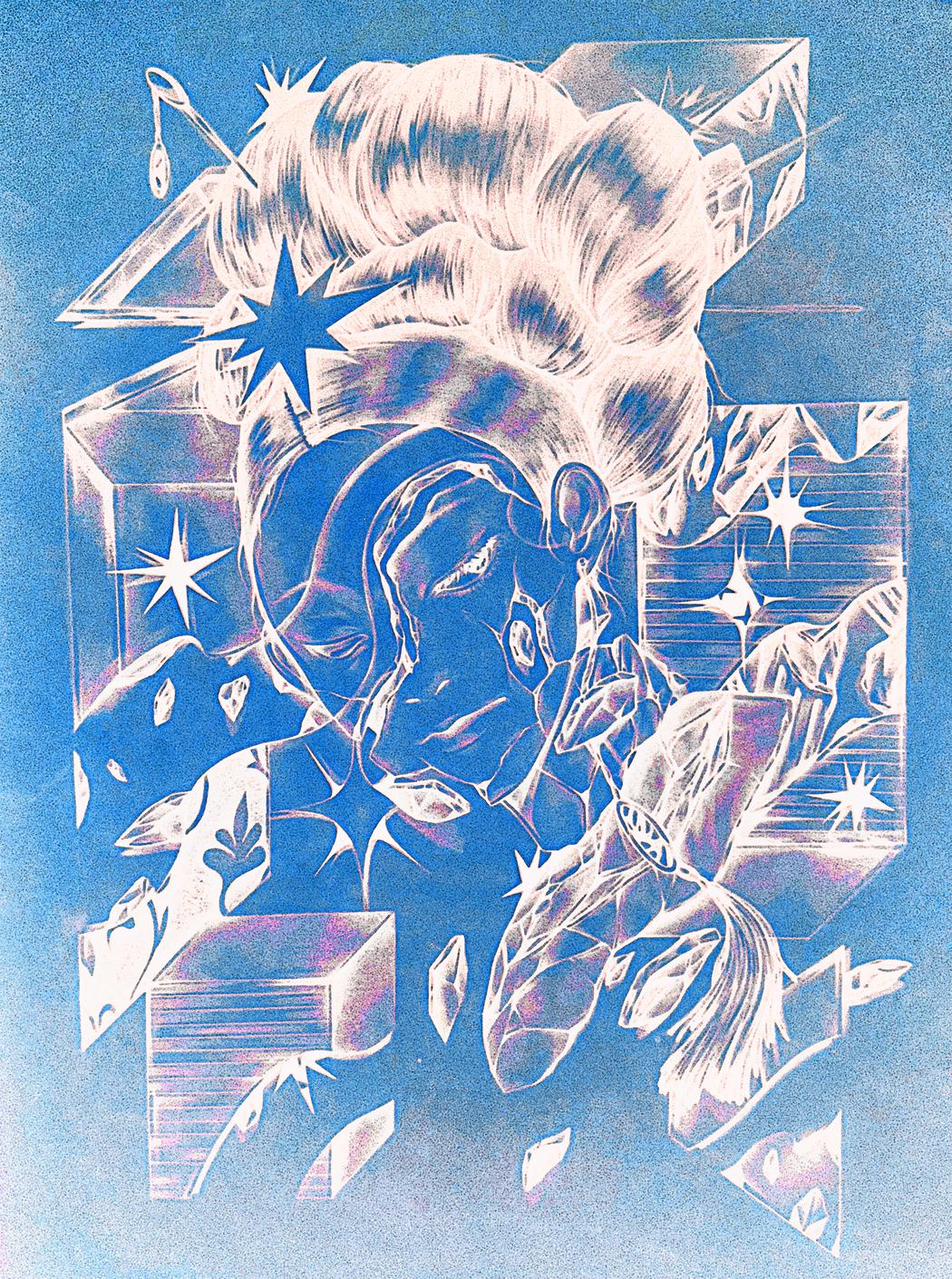Min Park
 Min Park | Fragments Of Identity
Min Park | Fragments Of Identity
Your works often blend elements of dreams, identity, and fantasy. How do you usually begin developing a new piece—does it start with an image, a story, or an emotion?
I usually begin with an emotion. A feeling of longing, confusion, or even wonder will often spark the first image in my mind. From there, I sketch loosely, allowing the emotion to guide how the composition unfolds. Sometimes the story comes later, as I connect the imagery with fragments of memory or dreams.
Having lived in both Korea and the United States, how have these cultural experiences influenced your artistic style and subject matter?
Living between two cultures has deeply shaped my work. From Korea, I carry influences of traditional aesthetics—minimal lines, symbolism, and a respect for negative space. From the U.S., I absorbed the openness of contemporary storytelling, where personal narratives can take on universal meaning. My art reflects this in-between space, where two cultural languages overlap and sometimes clash, but also create something new.
Many of your artworks have a surreal and layered quality. Could you share your process for combining different visual elements into a cohesive composition?
I think of my compositions like collages of memory. I start by layering sketches or watercolor washes that don’t necessarily connect at first, but reflect different parts of the idea. Then I refine the connections—using recurring motifs, color harmony, or linework to weave them together. It’s almost like piecing together a dream: fragmented but, in the end, emotionally coherent.
You draw inspiration from cartoons, movies, and novels. Can you tell us about a specific story or scene that has significantly influenced one of your works?
One example is Hayao Miyazaki’s Spirited Away. The way it visualizes identity and transformation. Where the main character forgets her name and has to reclaim it. It resonated with me deeply. I created a watercolor piece inspired by that sense of losing and rediscovering the self, which paralleled my own experience of living between cultures.
How do you see the role of social media in your artistic career, especially in connecting with your audience of over 26k followers?
Social media has been essential. It allows me to share not just finished works, but also my process, thoughts, and daily sketches. The instant feedback and support from a wide audience motivates me, and it also creates a dialogue—people share how the work connects to their own identity or dreams, which in turn shapes how I approach my practice. It feels like building a community around art.
Your participation in exhibitions such as “Power in Number 5” and “Wonderful Days” has brought your work to diverse audiences. How do you adapt your presentation for different cultural contexts?
I try to stay true to my themes, but I pay attention to how viewers in different places might connect differently. I feel like in the U.S., audiences often focus on the dream-like fantasy aspect. In Korea, people respond more strongly to the cultural references and symbolism. I adapt the framing of my presentation by my artist statements, titles, and even scale of the work. So that people can find a way in, no matter their background.
The themes of longing and identity are central to your art. What personal experiences shape the way you explore these concepts?
My own experience of moving between Korea and the United States has been central. That in-between feeling of not fully belonging to one place or another creates both longing and possibility. I also draw from everyday memories: family, childhood, and the small cultural rituals that define home. Those moments remind me that identity isn’t fixed; it’s layered, shifting, and often dream-like, which is what I try to capture in my art.

Leave a Reply